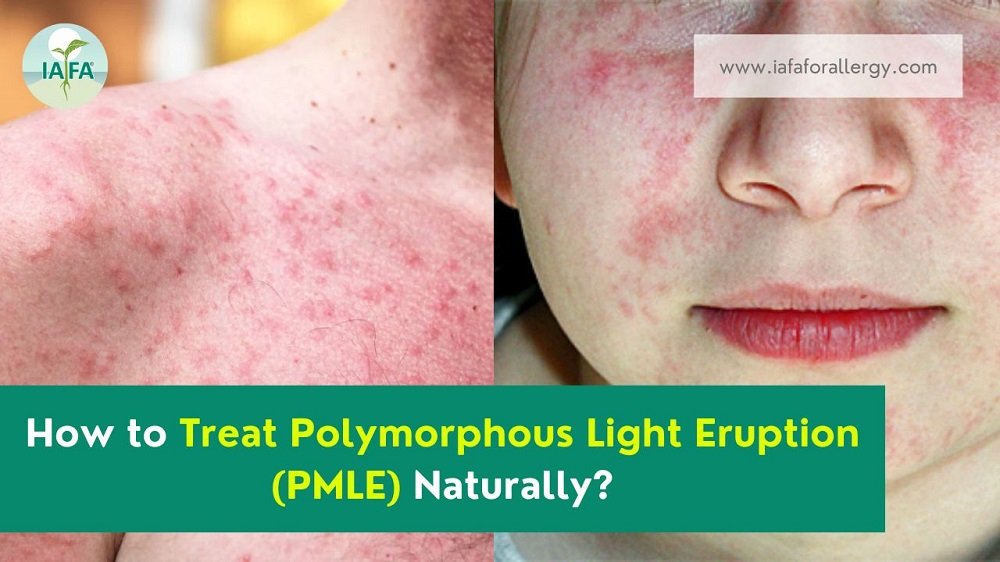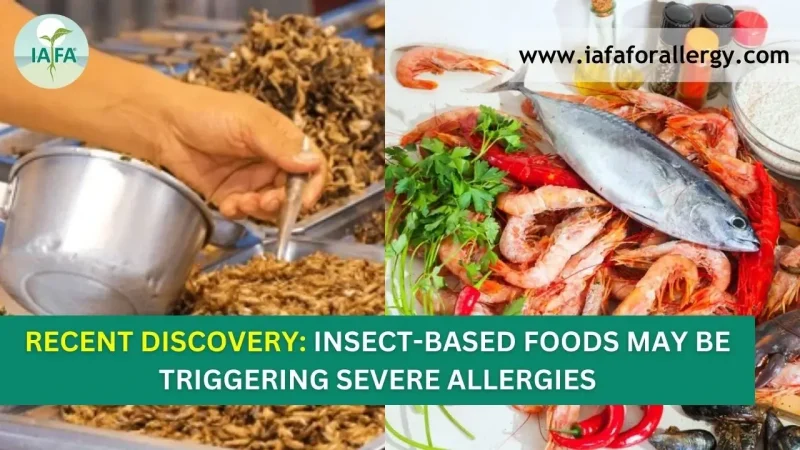Polymorphous light eruption is commonly known as sun allergy or sun poisoning. In our previous blog we have mentioned in detail the disease and IAFA®’s customized Ayurvedic Treatment of Polymorphous Light Eruption, we would recommend you read that blog first to get an idea about the disease and its natural treatment.
In today’s blog, we are going to discuss in detail some natural remedies to treat Polymorphous Light Eruption (PMLE) holistically. These remedies are also very useful to get rid of sun allergies. If you’re searching for some natural treatment options instead of conventional medicines like steroids which would have ill effects on the body in the long run, then this blog will provide you with a perfect answer. But as a caution, we would like to recommend that you should take professional advice or consult an ayurvedic doctor before implementing any natural remedies by knowing whether these natural solutions suit your body and also to assess whether you’re implementing them in the right way or not.
Natural Remedies to Treat Polymorphous Light Eruption (PMLE)
Several natural remedies can help alleviate the symptoms of Polymorphous Light Eruption (PMLE). Some natural remedies are mentioned below:
1. Sun Protection:
Protective clothing and sunscreen are your best buddies. When you know that you’re getting rashes after exposure to sun or UV radiation, the first thing you need to do is protect yourself from exposure to direct sun rays or UV rays. One can manage PMLE by avoiding exposure to UV radiation as much as possible. This can be done by wearing protective clothing, such as long sleeves and hats, and using sunscreen with a high SPF. One should never leave sunscreen when they are outdoors.
2. Aloe Vera:
Aloe vera is known for its soothing and anti-inflammatory properties, which may help reduce the redness and itching associated with PMLE. Apply aloe vera gel to affected areas several times a day. You can also mix Aloe Vera gel with Haridra (Turmeric) and apply it on the affected area and wash with lukewarm water after some time. Aloe helps in soothing the skin whereas turmeric reduces inflammation on the skin and helps to Treat Polymorphous Light eruptions.
3. Chamomile:
Chamomile is a natural anti-inflammatory and may help relieve itching and redness associated with PMLE. Brew a strong chamomile tea and apply it to affected areas with a clean cloth. Frequent application of chamomile helps in the reduction of inflammation of the skin.
4. Vitamin D:
Some studies have suggested that vitamin D may help alleviate the symptoms of PMLE. However, it is important to talk to your doctor before taking any supplements. Not only vitamin D helps in reducing the symptoms of PMLE but also helps in improving overall skin health.
5. Oatmeal Baths:
Oatmeal is known for its soothing properties and can help reduce itching and inflammation. Add colloidal oatmeal to your bath and soak for 20-30 minutes. Oatmeal baths can also help in relieving other skin conditions like Eczema, excessive skin inflammation, and itching.
6. Calendula:
Calendula is a natural anti-inflammatory and may help reduce redness and itching. Calendula is often used topically in the form of creams, oils, and ointments to soothe and heal skin irritations such as minor cuts, burns, and rashes. It can also be used orally to improve digestive issues and inflammation.
7. Diet:
Some studies suggest that a diet rich in antioxidants, such as fruits and vegetables, may help reduce the risk of developing PMLE and help in the Natural Treatment of Polymorphous Light eruptions. It also alleviates symptoms in those who already have the condition.
PMLE can be commonly seen in patients who have sensitive skin and are highly photosensitive. So to prevent sun allergy one has to alleviate skin sensitivity. Healthy diet modifications and lifestyle habits would help to manage your quality of life.
A Quick Wrap-Up
Many natural remedies help to manage the symptoms of polymorphous light eruption but we always advise must consult an ayurvedic doctor before following any remedies.
Dr. Sahil Gupta has more than 15+ years of expertise in treating various skin conditions including sun allergy. So if you find any symptoms of polymorphous light eruption, book an online consultation now and get Ayurvedic Treatment for Polymorphous Light Eruption without any worry of side effects.
The polymorphous light eruption can be harmless in most people but we have also witnessed some severe cases too. So, it’s always better to consult your healthcare provider immediately. There may be chances of getting confused with sun allergy symptoms with other skin conditions, so, before starting any herbal or natural remedy, take advice from an Ayurvedic expert like Dr. Sahil Gupta.
Also, if any of you suffer from other skin allergies, nasal allergies, food allergies or intolerances, and fungal infections, schedule a video consultation with Dr. Sahil Gupta and get rid of all your allergies.









